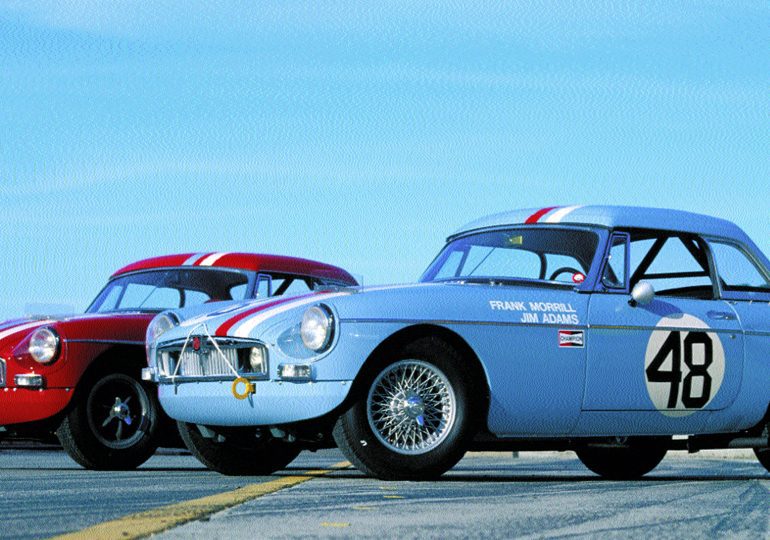The Qvale Sebring MGBs
By 1959, the MG Car Company was looking to update the somewhat dated and underpowered MGA sports car with a new more modern design that incorporated the latest unibody construction. This new project, code-named the EX 205, was given to Sydney Enver to design and would incorporate parent company BMC’s 1798 cc “B” series motor into an all new steel unibody construction monocoque that hung the front suspension off an attached steel subframe. Unveiled to the press in September 1962, the new MGB, as it was now known, featured a stiffer body (which in turn enabled softer springing) and more interior space and creature comforts than any other British sports car in its price range. Selling for just £834, the new MGB became an instant hit that resulted in nearly 500,000 examples being built over the next 18 years.
Land of Opportunity
Throughout the post war period, sales in the United States were a major part of MG’s business plan. As such, it didn’t take long for the boys in Abingdon to realize that race victories in the States led to to cars being sold on the streets. A perfect example of this “Win on Sunday, Sell on Monday” philosophy was the fact that sales of the MGA had been boosted, in no small part, from three consecutive years’ of solid performances in the punishing 12 Hours of Sebring. However, like several other major manufacturers of the time, MG had an official policy of no “factory” race entries as a result of the fallout from Pierre Levegh’s horrifying 1955 Le Mans crash. However, this did not mean that the factory couldn’t support “privateer” efforts. As such, MG entries at Sebring were always run under the banner of one or more American importers, despite the fact that these were, in all truth, fully factory-supported entries.
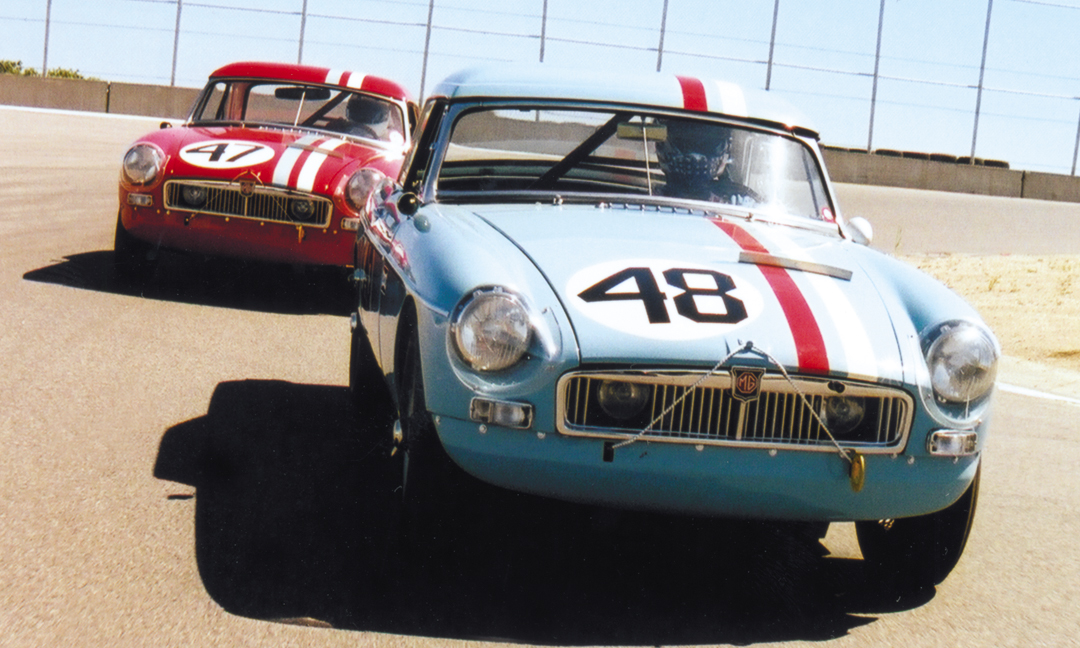
During this period of time, Abingdon’s primary racing goal was not to build the fastest or most exotic racing versions of their street cars, but rather to take virtually stock examples and demonstrate their reliability in long distance racing events. This approach had worked with great success in 1956 when a trio of nearly stock MGAs finished 4th 5th and 6th in class at Sebring and was followed the next year with a 1-2 class finish that also earned them the team prize. With continued Sebring success right up through 1962, it seemed only logical that the new MGB would uphold the family legacy upon its Sebring racing debut in 1963. However, racing is rarely that simple.
The 12 Hours of Sebring always posed an interesting set of challenges for the small MG competition department. Due to the fact that the cars needed to be shipped to Florida by ocean-going container, they needed to be completed during the winter while the department was also trying to focus on their always-important Monte Carlo Rally entries. Since the new MGB was not completed until late in 1962, there was very little time to test the car before it was to be shipped off for its racing debut at Sebring. To make matters worse, that year England was suffering a particularly brutal winter that saw most of the test tracks closed due to snow. As a result, MG mechanics were left little choice but to prepare the cars and give them a few brief runs up and down the snowy Abingdon roads before shipping them off to steamy Florida. As one might suspect, this lack of proper testing resulted in the two-car “Ecurie Safety Fast” MGB team of Christobel Carlisle/Denise McCluggage and Jim Parkinson/Jack Flaherty both suffer to overheating and oil surge problems that sidelined them early in the race. However, the BMC competition department was encouraged to learn that the honor of BMC was upheld by a Jaguar XKE entered by San Francisco-based importer Kjell Qvale, which finished an impressive 7th overall. Whether it was due to the logistical problems of preparing Sebring cars in the dead of a British winter, or the embarrassment over their previous year’s performance, sometime in 1963 the decision was made to support a Qvale-entered team of MGBs for the 1964 running of the 12 Hours of Sebring
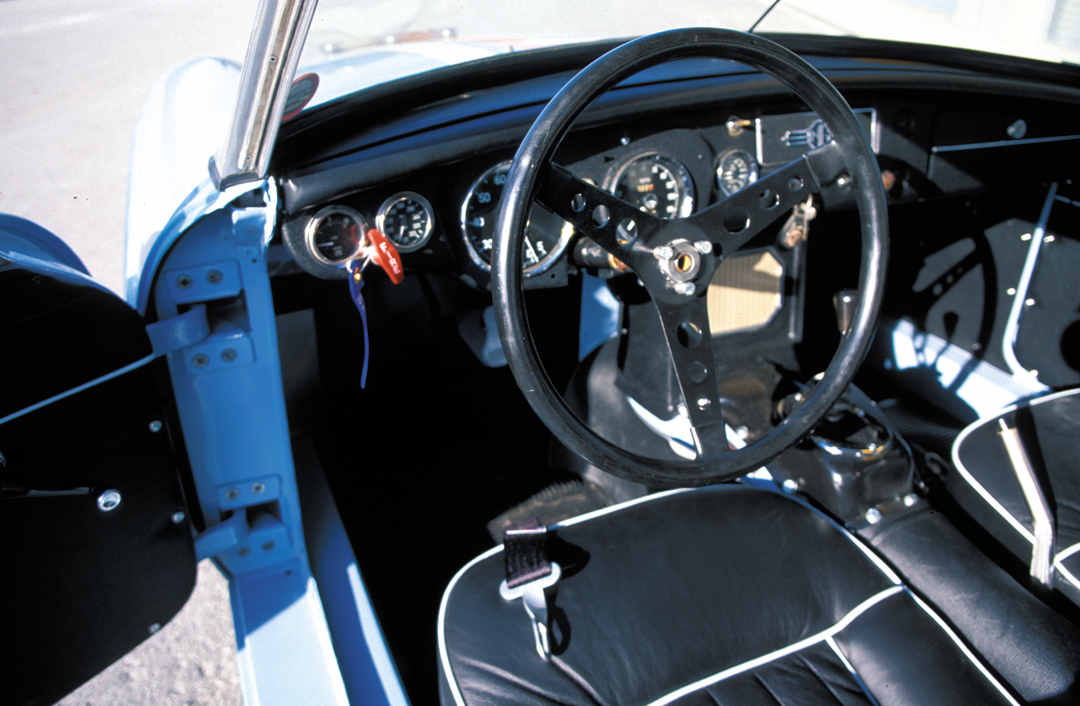
Photo: Casey Annis
For 1964, Qvale was directed to take three stock MGBs and using some special parts sent over from Abingdon, build three cars to compete at Sebring. Qvale and his competition department head Joe Huffaker chose a red, a white, and an Iris blue MGB from one of the first shipments to come to the US in 1962. In fact, the blue car (#48) was the fourth bodyshell ever produced, while the red car (#47) was the 14th bodyshell produced. Interestingly, one of the reasons the red car was chosen was that it was damaged in shipment and, as part of the insurance settlement, the insurance company made Qvale surrender the chassis identification tag so that the car could not be sold to the public. Ever the shrewd businessman, Qvale chose that car, painted Tartan Red, to be one of the three Sebring racecars.
For the Qvale-entered 1964 effort, Abingdon sent over a performance kit for the MGB that included aluminum front fenders, deck lids and doors (with Perspex windows installed), as well as multispeed wiper motors, dual gas tanks and four competition-spec motors. However, one of the first things that Huffaker did was to take the engines completely apart and rebuild them with revised porting, new pistons and his own specification cam grind.
Drivers for the three-car effort were to be Jack Flaherty and Jim Parkinson in the white car (#46), with Jack Dalton and Ed Leslie in the red car (#47) and Jim Adams and Frank Morrill driving the blue car (#48). However, as race day approached Huffaker, who was also building the MG Liquid Suspension Special for that year’s Indy 500, got delayed with tire testing, and so driver/mechanic Morrill was asked to lend his mechanical skills in the Sebring pits as crew chief for the race and turn over his driving position to alternate driver Merle Brennan.
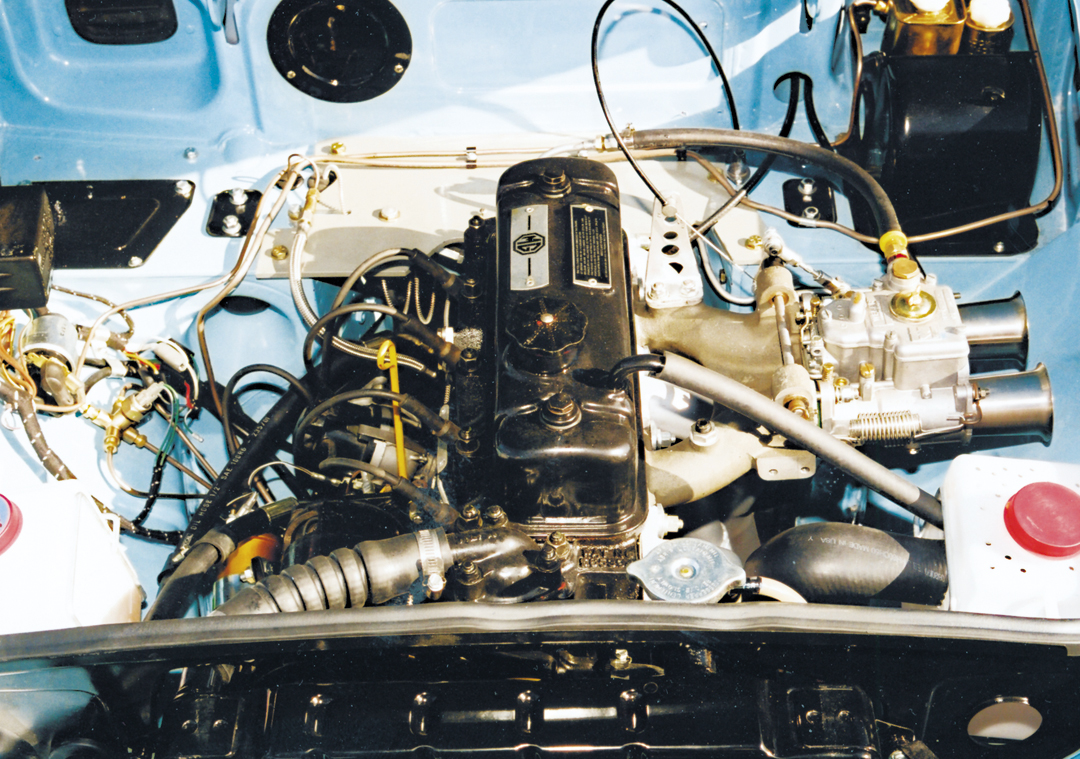
Photo: Jim Williams
’64 Sebring
As a way of trying to make the famous Le Mans start more safe, Sebring organizers in ’64 utilized qualifying times to grid the cars rather than the previous system of gridding the cars by engine displacement. As a result, the Leslie/Dalton MGB (#47) qualified 40th on the grid, while the car of Parkinson/Flaherty qualified 45th and the car of Adams/Brennan started in 46th position.
When the green flag fell on March 21st, drivers charged to their cars and roared off with the Corvette Grand Sport of Roger Penske and Jim Hall leading the opening lap. In the 2000 cc GT category, the Qvale-entered MGBs had stiff opposition from a pair of factory-backed Porsche-Abarth Carreras and a 2000 GS GT, but the MG trio set into a steady drive hoping that reliability would enable them to outdistance the far more sophisticated Porsches. However, the team’s confidence was initially shaken after just 15 laps when the Parkinson/Flaherty MGB (#46) retired with a failed differential caused by a faulty axle seal.
As day began to turn to night, the remaining two MGs chugged along flawlessly and steadily climbed up the leader board as larger and more sophisticated machinery began to succumb to the hardships that only Sebring can meter out. By the time the checkered flag was thrown, the Leslie/Dalton car had finished 17th overall and 3rd in the 2000 cc GT class, just 10 laps behind the class-winning Porsche 2000 GS GT and the 2nd-placed Abarth-Carrera, while the Adams/Brennan MGB finished 22nd overall and 4th in class. Considering the previous year’s results and the opposition, the Qvale team had much to be proud of, not the least of which being the fact that the Leslie/Dalton car finished one position higher than the Penske/Hall Grand Sport that led early on!
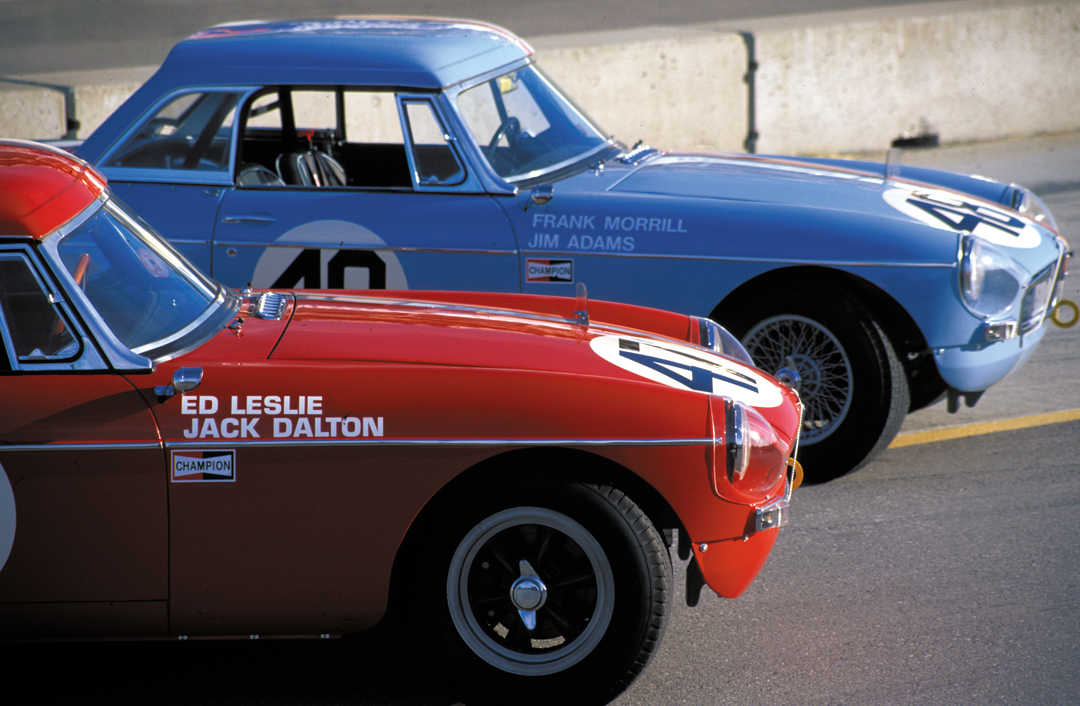
Amazingly, the MGB went on to compete at Sebring each year thereafter until 1978, [the only exceptions being ’72 and ’74]. After the solid showing at Sebring in 1964, much of the MGB effort during the ’60s was by “official” BMC factory teams resulting in a 2000 cc GT class win with Roger Mac, Peter Manton and Andrew Hedges in 1966, and a 3-liter Prototype class win by Paddy Hopkirk and Andrew Hedges in 1968 driving the MGC GTS. This impressive 16-year participation record makes the MGB one of the longest-raced single models of production cars in Sebring history.
Life after Sebring
In the case of the Qvale-entered MGBs the story did not end with the 1964 running of Sebring. After Sebring, the red #47 was promptly bought by Ernie Rodrigues, who at the time worked for Kjell Qvale as his vice-president of distribution. Rodrigues bought the red Sebring car as a 21st birthday present for his son Gary to use to earn his SCCA racing license.
Gary Rodrigues raced the car a few times in 1964 as a modified (the SCCA would not let it run as a production car due to the non-standard aluminum panels), but soon sent the car to Chic Vandagriff’s Hollywood Sports Cars to have steel panels re-installed for SCCA competition. Rodrigues then raced the car with great success for several years, racking up numerous SCCA championships. In 1968, Rodrigues entered the MG into an enduro at Riverside Raceway that he was to codrive with his original driving instructor. Unfortunately, the instructor rolled the car part of the way through the race, which ended up becoming a big problem for Qvale as he had promised to have the car appear on the “Tonight Show With Johnny Carson” just three days later, to help promote James Garner’s new movie, “Grand Prix.”
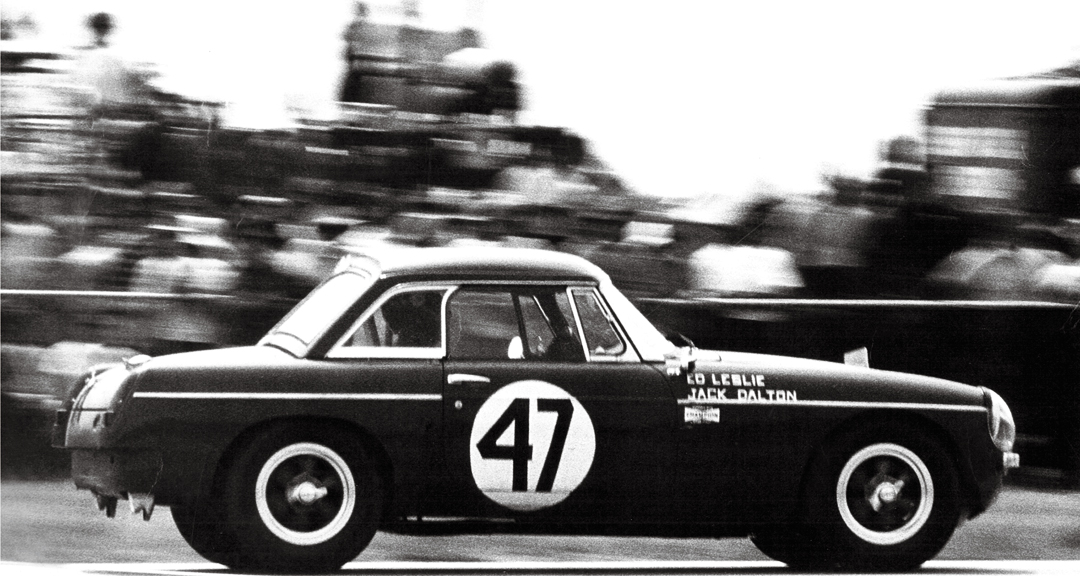
Photo: Gilbert Collection
During the next three days, over 160 man-hours went into rebuilding the MG, which ended up just making its TV debut on the “Tonight Show” as Gary drove the car out on stage and an overall-wearing pit crew of Johnny Carson, Joe Huffaker and James Garner went to work changing one of the knockoff wheels. In fact, according to the car’s current owner, one of the original wheels still bears a mark where Johnny missed once with the tire mallet!
By the end of 1968, Rodrigues sold the car to Buzz Moore, who next sold it to Randy Sharp who raced it only a few times before selling it to John McEwen, who then sold it to its current owner Butch Gilbert in 1979. In the process of restoring the car in the ’90s, Gilbert contacted Cris Vandagriff (son of Chic Vandagriff) and asked him if Hollywood Sports Cars might still have some old photos of the car since they did much of the work on it in its post-Sebring life. Cris called Gilbert back some time later to let him know that, no they didn’t have any pictures, but that he did find most of the original Sebring aluminum panels in the shop’s rafters, still with the original Sebring paint and numbers on them!
After purchasing the red Sebring car, Gilbert became interested in locating the other cars. He learned that the Iris Blue Sebring car (#48), was sold 10 days after the race to a Bay area MG enthusiast by the name of Bill Schmidt. Schmidt wanted the car so badly that he traded in both his street and race MGs to buy it and spent a fair amount of time driving it back and forth to work before he could afford another daily driver. Schmidt raced the blue car for the next four years until he sold it to Rob Smith who owned it from 1968 until 1974, when he sold the car to Mac Townsend. Townsend never raced the car and eventually sold it to Gilbert in 1984. When Gilbert bought it, not only did it still have all of its original Sebring equipment, it even had the original BMC competition engine with only 24 documented races on it.
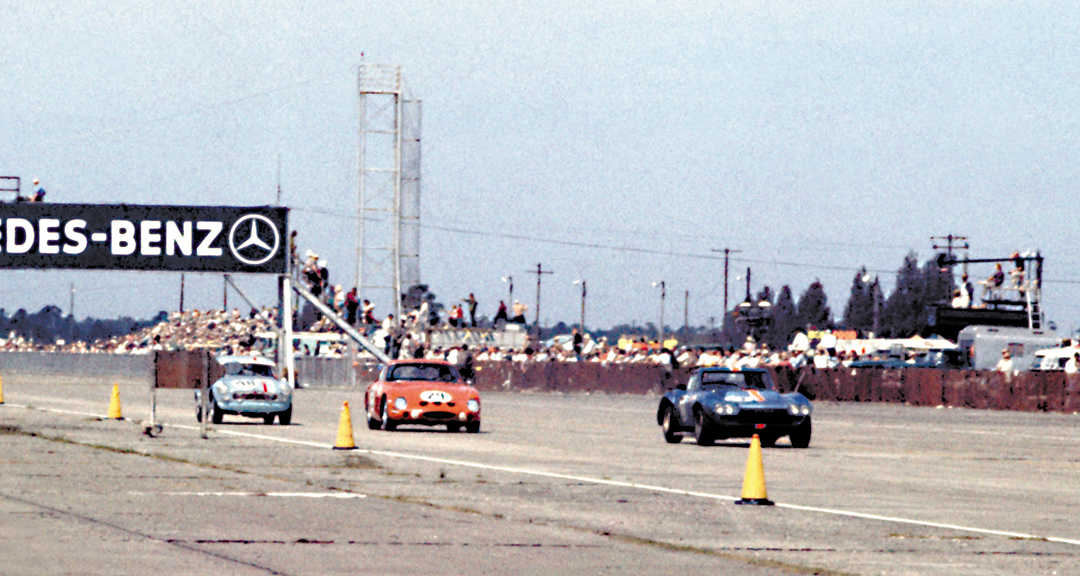
Photo: Pete Lyons – www.petelyons.com
Driving the Sebring MGBs
This past March I was invited to take part in HMSA’s Laguna Seca race where Butch Gilbert was going to bring both the red and blue Sebring cars for a 1964 Sebring team reunion. While Gilbert has raced the red car for the last year or so, he has also been frantically working to finish the blue car in time for this event. Presumably, all those late-nighters must have clouded his judgment, since he graciously offered to let me test drive the blue ex-Adams/Brennan car on its big debut weekend.
The opportunity to drive the cars, came during lunchtime on Saturday, when Gilbert and I took both cars out for a demonstration run to honor the 40th anniversary of the team’s assault on Sebring. Both cars looked immaculate and as period correct as any ’60s era GT racecar could look. In the case of the blue Adams/Brennan car, it looked absolutely brand new, having just finished its full ground-up restoration only the week before.
With our time on the track quickly approaching, I open the door to #48 and climb inside. The interior is nothing short of period perfect. As it did at Sebring, #48 has a fully trimmed interior in black with white piping, that on this warmish March Monterey day even had that new British car smell! The seats are standard issue MGB, which means that it is comfortable, but doesn’t provide any kind of lateral support. Looking out through the windscreen, I’m also struck by the fact that my head is actually up inside the fiberglass hardtop giving the interior a very “tight” feel, even though the cockpit is actually quite spacious.
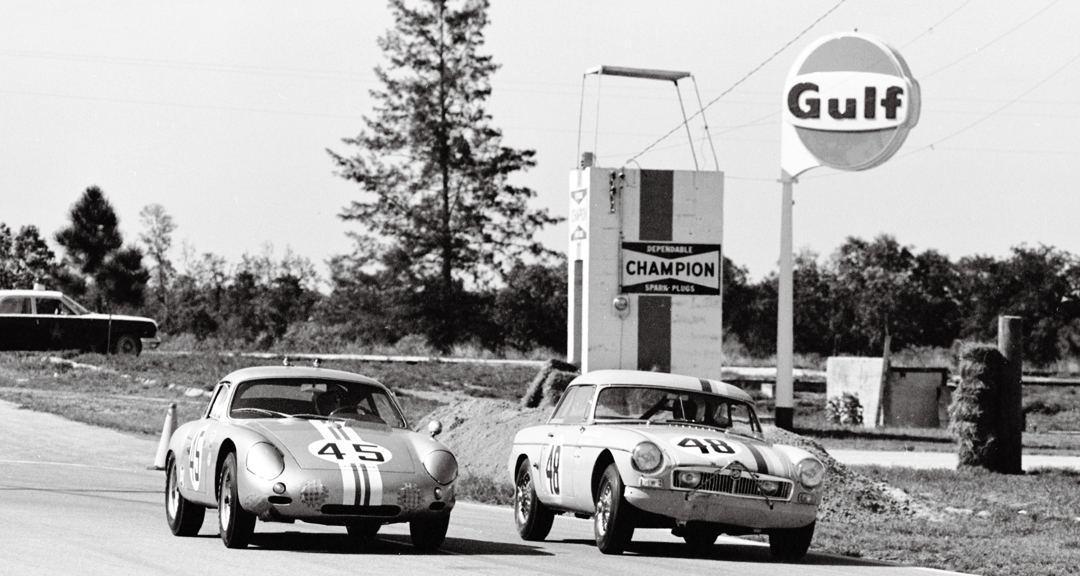
Photo: Pete Lyons – www.petelyons.com
After being given the signal to take to the track, I grab the standard ignition key, give it a turn, and the MG fires up and idles along just like any other ’60 British sports car. With a quick dip of the clutch pedal, I select first gear, let out the clutch and—blahhhh—I nearly stall the car. Well, that’s embarrassing! I put the clutch back in, reselect first—blahhh, again. Hmmm. Then I remember that Gilbert had mentioned that this car has been restored EXACTLY as it was when it ran at Sebring, which meant that it also had a rear end that was impossibly high so as to help preserve the engine for those grueling 12 hours. Fortunately, the third try is the charm as I give her more gas and gingerly slip the clutch off the line and I’m underway.
Since, I’ve raced an MGB before, I came into this test drive thinking that I pretty well knew what to expect. However, within the first half of the first lap, I could tell that this MGB was special. One of the biggest differences is how much of an effect the lightweight aluminum panels have on the car’s performance. Since the car is significantly lighter than a stock variant, I notice the difference immediately in both the acceleration and the handling. Right from the start, the Sebring car feels more responsive and more nimble, not in a “think-and-it-reacts” formula car sort of way, but definitely more so than any other production MGB that I’ve driven. As I accelerate out of Laguna Seca’s Turn 2 and into Turn 3, I also notice that the little 1798 cc engine has more snap than I would expect from a “B.” Presumably part of this is due to the car’s lighter weight and part of it is because of Joe Huffaker’s special tweaks to the BMC competition spec engine. Accelerating out of Turn 4 and up the hill towards the Corkscrew, I discover that the MG really wants you to carry as much speed as possible out of the turns because the engine, while spritely, doesn’t have the torque to win any drag races.
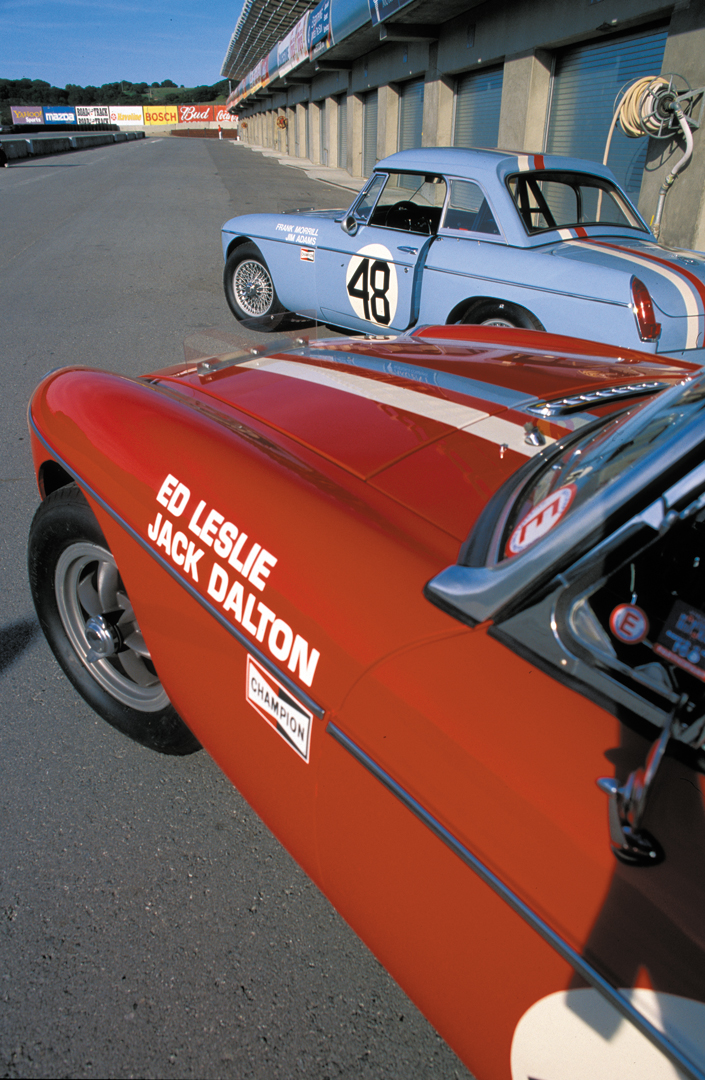
As Gilbert and I pick up the speed on the following laps, I start to settle into a comfortable rhythm of hustling the car a bit faster through the turns, thus trying to maximize exit speed at every place I can on the track. The wonderful thing about this car—and I’m sure one of the main reasons why it did so well at Sebring for so many years—is that it is so user friendly and easy to drive. While it certainly doesn’t feel like the fastest 2-liter GT that I have ever driven, it definitely feels like a car that could be easily driven at its limit for 12-24 hours without any fuss, which is exactly what BMC, Joe Huffaker and Kjell Qvale had in mind 40 years ago this year.
Buying and Owning a Sebring MGB
Of the three Qvale-entered 1964 cars, Gilbert owns the two seen here, but the third car has gone missing. While it is always difficult to assess the value of cars with such exclusive histories, it is believed that the two cars will reach six-figure prices when they go up for sale in August at RM’s Monterey auction.
Alternatively, if you have to have an MGB that raced at Sebring, there are at least a dozen other examples floating around out there that can lay legitimate claim to having run in the Florida classic, and therefore are eligible for FIA certification and premier events like the Le Mans Classic and the Monterey Historics. Prices obviously will vary depending on provenance and condition; however, maintenance and upkeep should be no problem as there are ample suppliers and spare parts for the more than 500,000 examples of MGBs made over its 18 year production run.
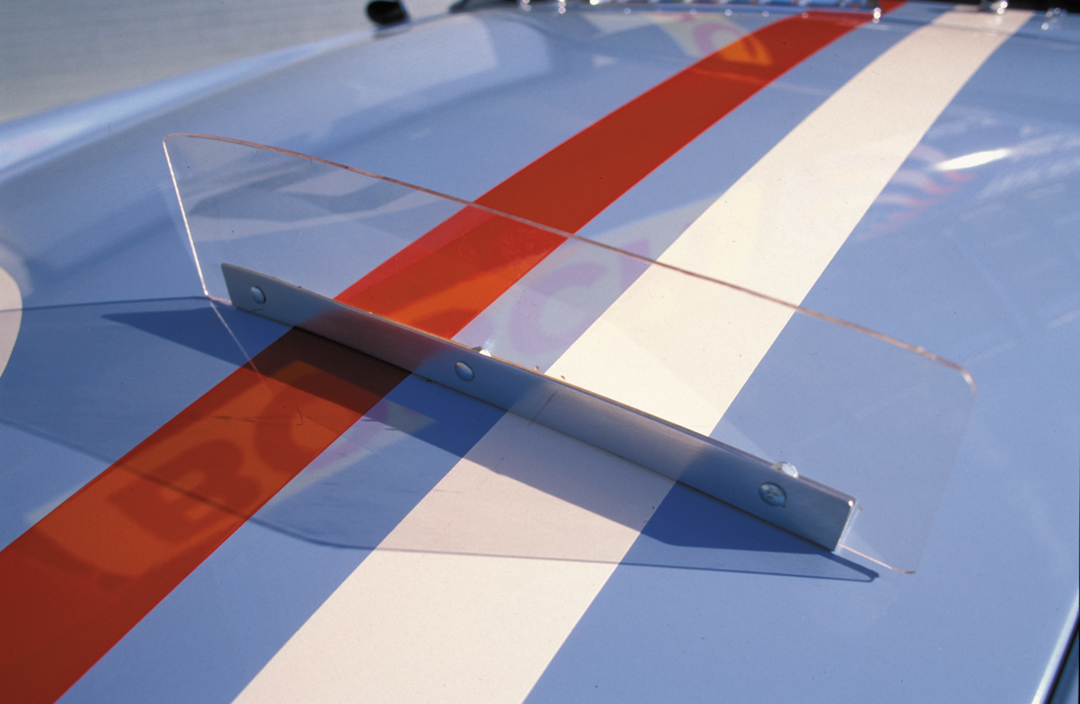
Chassis: Uni-body steel construction with aluminum front fenders, doors, hood and deck lid
Wheelbase: 91″
Track – Front: 49.0″
Track – Rear: 49.25″
Overall length: 153.2″
Overall width: 59.9″
Overall height: 49.4″
Weight: 2027 lbs
Suspension: Independent with integral upper control arm at the front, live axle at the rear. Armstrong lever shocks on all corners (adjustable at rear 21 clicks)
Engine: Inline, 4-cylinder, single cam, push rod
Displacement: 1798 cc
Bore/Stroke: 80.26mm/88.90mm
Carburetion: Twin 1 3/4 SU HS6 or single Weber sidedraft
Gearbox: Four-speed manual, close ratio gear box supplied by factory tuning department synchromesh on top three ratios
Max Bhp: 140 at 6000
Max Torque: 107 at 3500
Resources
Allison, M. & Browning, P.
The Works MGs
Haynes Publishing, 2000
ISBN 0-85960-603-2
Breslauer, K.
Sebring
David Bull Publishing, 1995
ISBN 0-9649722-0-4
www.MGBexperience.com
Special thanks to Butch and Sharon Gilbert for their help, generosity and trust with these special cars. Also special thanks to Jim Williams for, yet again, hanging out the back of a speeding car to take great action shots and Pete Lyons for supplying what has proved to become hard to find period shots of these cars.


